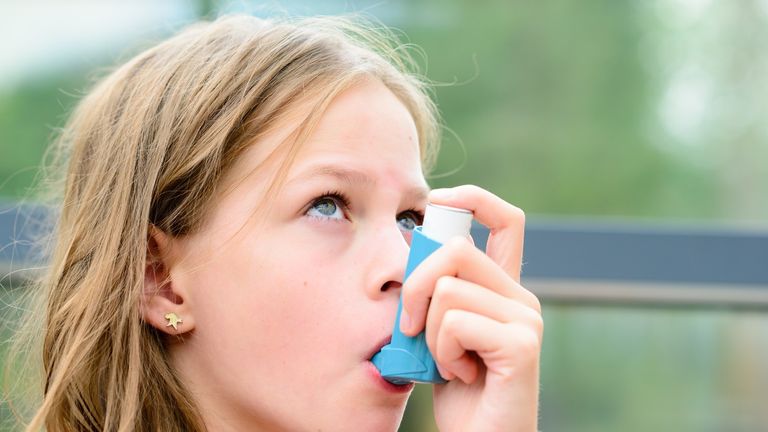‘Toxic’ traffic pollution linked to childhood asthma cases
One in five fresh cases of asthma in children could be linked to traffic pollution, according to new research.
Nitrogen dioxide, which is mainly emitted by road vehicles, has been labelled a “substantial” risk factor for the condition, making major UK cities like London and Manchester especially toxic.
Figures cited by a study in The Lancet Planetary Health journal suggest that 29% of new childhood cases in the capital can be attributed to nitrogen dioxide pollution – and the figure stands at 23% in Manchester.
The UK-wide figure is 19% – six per cent higher than the 13% of the four million annual diagnoses worldwide.
Out of the 194 countries studied, the UK had the 24th highest proportion of new childhood asthma cases that could be blamed on traffic pollution.
South Korea topped the list, with nearly one third (31%) of new diagnoses linked to nitrogen dioxide exposure.
It is thought that pollution from traffic may damage airways, leading to inflammation and the development of asthma in children who are genetically predisposed to the condition.
It is not clear which pollutant in traffic air pollution is responsible, but previous research has suggested nitrogen dioxide is key and vehicle emissions can contribute up to 80% of ambient nitrogen dioxide in cities.
Lead study author Dr Ploy Achakulwisut, of George Washington University, said schemes like the ultra-low emission zone introduced in London were key to tackling the issue and improving the health of youngsters.
The zone, which covers the same area of central London as the congestion charge, operates at all times and demands that drivers of vehicles that fail to meet emissions standards pay a fee of £12.50.
Heavier vehicles, including lorries over 3.5 tonnes and buses and coaches over five tonnes, command £100 charges.
Dr Penny Woods, chief executive of the British Lung Foundation, said: “We used to think the only real danger roads posed to children was the threat of a car accident.
“However now we can see there’s an equally deadly risk; breathing in illegal levels of air pollution and getting a respiratory disease like asthma, or growing up to have smaller, weaker lungs.
“Air pollution is invisible, so it’s easy to ignore – but studies like this make it clear toxic air is a pressing threat, and we need to act.”
The researchers behind the study have suggested that their findings may mean the World Health Organisation has to change its policy regarding what constitutes a safe concentration of nitrogen dioxide.
They found that 92% of cases of childhood asthma attributable traffic pollution occurred in areas with average nitrogen dioxide concentrations below the WHO guideline of 21 parts per billion.
Source: Read Full Article




